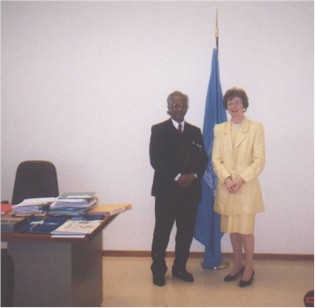
UNITED NATIONS MECHANISMS AND THE LIBERATION OF DALITS
By Yogesh Varhade
This United Nation's (UN) section has been specifically designed to facilitate the scholars, activists, and empathizers to focus their attention on United Nation's Human Rights Instruments and its applicability to the dalit cause.
Photos of some of the key people of United Nations helping Dalit Cause through different bodies.

Ms Mary Robinson - UN High Commissioner for Human Rights with Mr. Yogesh Varhade
during a special meeting on 3rd May, 2000 at Geneva
A
MBEDKAR CENTER FOR JUSTICE AND PEACE (ACJP) had the privilege of participating in many ground breaking meetings of different UN bodies like Treaty Body Committees, working groups under Sub Commission and World Conferences on Human Rights, Social Summit, Women's Rights etc. organized by UN during the last ten years. Two Ambedkarite activists namely Dr. Berwa and Mr. Bhagwan Das brought dalit issue in earlier meetings of UN Commission on Human Rights and Women's issues by Ruth Manorama group and minorites issues by Mr. Henry ThiagarajWe have extensive material in our archives and we shall bring it gradually for the information of activists, scholars and the students.
This section has been organized in three parts. First part gives the Fundamental Human Rights Instruments of UN. The second part gives the submission of State Party-India Reports to the various Treaty Bodies of UN and the concluding observations of the Treaty Bodies, which is of a great significance for the evolving process of United Nations for the Rights of the DALITS, happening for the first time in the history of United Nations. The third part gives the dialogues in the form of Summary Records between the UN Committee members and the delegations of India. Most of the Treaty Bodies Recommendations in their concluding observations in the Committee on Elimination of Racial Discrimination [1996], Committee on Human Rights (Civil and Political Rights) [1997], and Committee on Child Rights [2000], were the fruits of extensive lobbying by Ambedkar Center.
The following are the Treaty Body reports in the form of Concluding Observations and Summary Reports during the discussions of country report - INDIA. The summary reports are of great importance because the delegation of India to these meetings had to answer many questions put by the experts on these different Treaty Bodies which gives the clear picture of India's version to abide by these conventions.
It is very important to note that India proudly explained the process of public litigation through the Supreme Court of India just be sending a letter, is a common occurrence and any one can do it
.We suggest our readers to make a special note of it, in case, they want to use that mechanism in India's Supreme Court as per India's above statement.
1. A. India Report - Submitted by State Party to the Committee on Rights of the Child
B. Concluding observations on the Committee on the Rights of the Child - Jan.-Feb.2000
C. Summary Records of the discussion between the Committee on the Rights of the Child and the delegation of India :
2. A. India Report - Submitted by State Party to the Committee on Human Rights
B. Concluding observations of Committee on Human Rights (Civil and Political Rights) - 1997
C. Summary Records of the discussion between the Committee on Human Rights and the delegation of India :
4. Report on 1993 World Conference on Human Rights at Vienna, Austria
6. Report on World Conference on Women held at Beijing, China - 1995
b. UN Press Release - WOMEN’S ANTI-DISCRIMINATION COMMITTEE TAKES UP REPORT OF INDIA
8. Selected Articles of the Indian Constitution
9. The Scheduled Castes and Scheduled Tribes (Prevention of Atrocities) Act, 1989
10. The Scheduled Castes and Scheduled Tribes:(Prevention of Atrocities) Rules, 1995
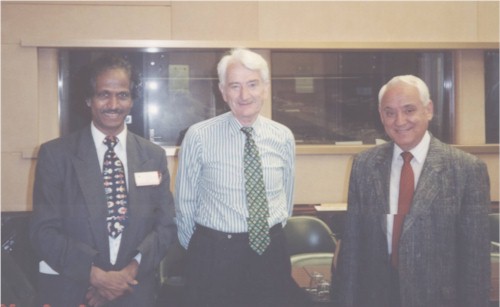
CERD Chair Mr. Michael Benton and Vice-Chair Mr. Garvalov with Mr. Yogesh Varhade during the debate on India Report, August 1996 at Geneva
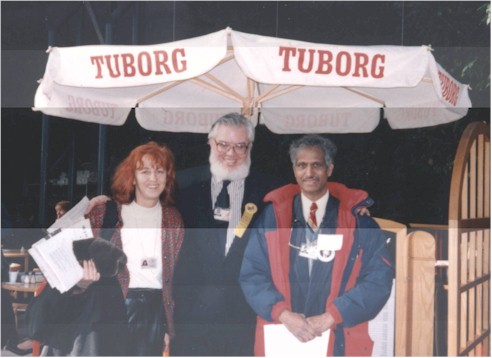
Ambassador Somavia [ (Chile), President, World Summit on Social Development held at Copenhagen, Denmark 1995] and Prof. Ana Maria Quiroz with Mr. Yogesh Varhade
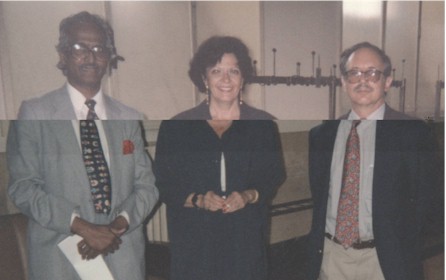
Madam Chanet, Chair Committee on Human Rights with Mr. Kretzmer and Mr. Yogesh Varhade during debate on India Report in July 1997 at Geneva
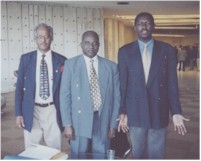
Prof. Glele-Ahanhonza (Center), Special Rapporteur on Racisim, Racial Discrimination and Xenophobia, with his secretary Daniel Atchembo with Mr. Varhade
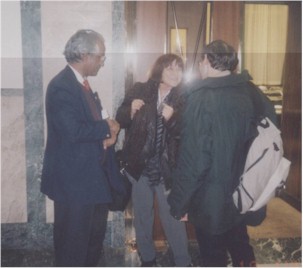
Madam Karp, Rapporteur on India Report - Committee on Rights of Child, with Bruce Abramson, Lawyer , friend of Dalits and Mr. Varhade
How to Submit Complaints regarding violations of Human Rights to UN HIGH COMMISSIONER FOR HUMAN RIGHTS
Acknowledgements :
Special thanks to Smita Narula (BROKEN PEOPLE), Human Rights Watch and UN Documentation Division.